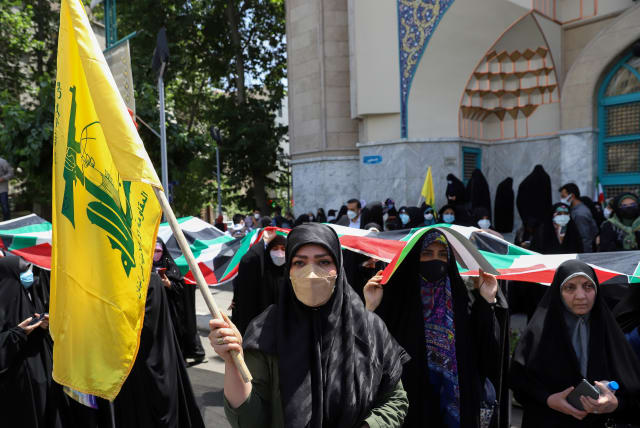Iran thinks Israel is losing its deterrence - analysis

Iran‘s regime has a feedback loop of consumption of Israeli media, in which its own beliefs are bolstered by reading reports in Hebrew media, which then reinforces Tehran’s worldview.
Iran’s regime believes Israel is losing its ability to deter Iranian-backed terror proxies. This primarily relates to Iran’s backing of Hezbollah and Palestinian Islamic Jihad, as well as Hamas.
This could cause Iran to miscalculate. For now Iran is relying on its own interpretation of Israeli media to justify a kind of feedback-loop of information whereby Iran’s own arrogance is justified by reading about Israel’s own internal criticism.
Tasnim news, considered close to the IRGC, is the main emitter of this confirmation bias for Iran. The media reports on what Israel is saying about the Jenin operation and Hezbollah establishing tents in disputed areas on the northern border with Lebanon, and concludes that Israel is not able to deter Hezbollah. Iran believes Israel’s military over the last decade and a half has “recorded nothing but failure.”
Iran apparently believes this because it focuses on the campaign between the wars in Syria and the various operations in Gaza and concludes that Hamas and Iran’s entrenchment in Syria has continued. Therefore Israel’s efforts to manage the conflict or “mow the grass” has not succeeded, in Iran’s view.
Tasnim news wrote this week that “the Zionist regime, which in the past decades did not hesitate to commit any aggression against the Arab countries and especially the Palestinians, is now in a situation where it does not have the courage to dismantle Hezbollah's tents at the border point of Lebanon and occupied Palestine, and it has appealed to the United Nations because of the fear of this party. Yemen and Iraq are also two new fronts that have encircled the Zionists along with Syria and Iran and Lebanon and Palestine.”
Israel surrounded by threats
Iran here is showing off its battle plans. It wants to leverage its proxies in Syria, Lebanon, Iraq, Yemen, Gaza and the West Bank to unify their fronts against Israel and provide a kind of 360 degree threat against Israel. This consists of a lot of groups that don’t actually have the ability to project a major threat.
For instance Jenin-based terror groups mostly carry M-4 and M-16 style rifles. Together they form at most a few regiments of fighters. Gaza’s terror infrastructure has been thwarted by systems like Iron Dome. The Houthis may have a few long range Iranian drones, but they lack the ability to do much else. Hezbollah is a more serious threat. Iraqi-based militias and Syrian militias backed by Iran have shown themselves to lack major military means against serious militaries.
The real story then of Iran’s analysis of Israel’s apparent “failure” is that Iran wants this to be true. Iran says that Israel is unable to deter Hezbollah. However, it is learning this from reading debates in Israel.
The fact that Hezbollah has been seeking to provoke Israel is part of the Iranian game plan, but Hezbollah’s tents are not the main threat. Iran shows that it’s real interest today is in symbolic “victories” such as tents or getting a few dozen gunmen in Jenin to parade after a battle in which they had run away.
From Iran’s point of view it has adopted the Palestinian slogan of “existence is resistance.” Indeed, its proxies do exist and they continue to slowly grow. Iran’s goal is always a slow anaconda-like strategy, using its octopus of proxies to slowly move pawns toward Israel. So far it is reading into this a feedback loop of “success.”
Jerusalem Post Store
`; document.getElementById("linkPremium").innerHTML = cont; var divWithLink = document.getElementById("premium-link"); if (divWithLink !== null && divWithLink !== 'undefined') { divWithLink.style.border = "solid 1px #cb0f3e"; divWithLink.style.textAlign = "center"; divWithLink.style.marginBottom = "15px"; divWithLink.style.marginTop = "15px"; divWithLink.style.width = "100%"; divWithLink.style.backgroundColor = "#122952"; divWithLink.style.color = "#ffffff"; divWithLink.style.lineHeight = "1.5"; } } (function (v, i) { });

